It Nepal is a landlocked country in South Asia which is known for its stunning Himalayan landscapes, rich cultural heritage and warm hospitality. The country is home to eight of the world’s 14 highest peaks, including Mount Everest.
Its diverse geography supports a wide range of ecosystems making it a biodiversity hotspot. Nepal’s culture and traditions including Hinduism, Buddhism, Islam and other religions, co-exist harmoniously.
Tourism plays a significant role in the economy with millions of visitors drawn for trekking, mountaineering, wildlife safaris and cultural experiences. Trek Me Nepal is a reputable trekking agency that offers experienced guides, personalized itineraries and sustainable tourism practices. Nepal also offers UNESCO World Heritage Sites and wildlife attractions.
Best Time To Visit Nepal
The best seasons to visit Nepal include spring (March to May), autumn (September to November), winter (December to February) and monsoon (June to August).
Spring brings blooming flowers, lush greenery and mild temperatures making it perfect for outdoor activities like hiking, sightseeing and wildlife exploration. The valley also hosts cultural festivals and celebrations during this time.
Autumn is the peak tourist season, with clear skies, pleasant temperatures and breathtaking Himalayan views. Winter offers clear skies and dry weather making it an excellent time for cultural sightseeing and exploring the valley’s markets. However, monsoon brings heavy rainfall and humid conditions making it the least favorable time for visiting.
Historical Treasures Of Nepal
Nepal’s ancient history is like a storybook filled with tales of legends, myths and real events that happened long ago. The country is home to various civilizations, dynasties, and cultures, each leaving an incredible mark on its heritage.
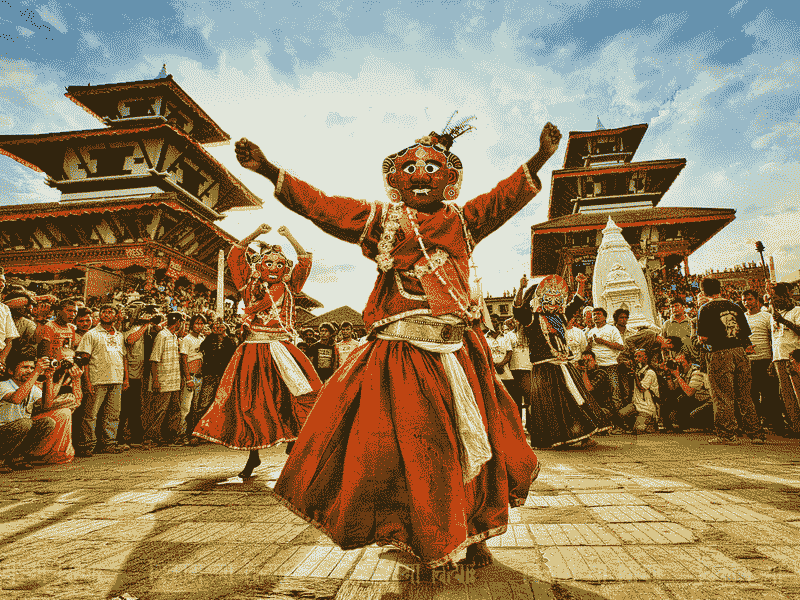
The country is housed with ancient temples, palaces, and monuments and each is a masterpiece of craftsmanship and design. Sacred sites and pilgrimage centers are also a part of Nepal’s cultural heritage.
Efforts are underway to preserve and protect its rich historical heritage, with UNESCO World Heritage Sites like the Kathmandu Valley, Lumbini and Chitwan National Park as Nepal continues to modernize. Nepal’s historical treasures offer a preview of the nation which showcases the spirit of its people and the beauty of its landscape.
The Ancient Cities Of Kathmandu Valley
Kathmandu Valley’s ancient cities Bhaktapur, Patan and Kathmandu, offer unique glimpses into Nepal’s rich heritage. Bhaktapur is known as the City of Devotees, features well-preserved medieval architecture.
Patan earns its reputation as the City of Fine Arts through its vibrant artistic scene and celebrated Newari architecture. It boasts iconic landmarks like Pashupatinath Temple, Boudhanath Stupa, and Swayambhunath Temple, making it renowned as the City of Temples.
Kathmandu |The City Of Temples
Kathmandu is known as the City of Temples. It is the main Nepalese metropolitan city with a rich cultural heritage. It is filled with pagoda shaped temples which each tell a story of devotion and spirituality.
Pashupatinath Temple is a Hindu pilgrimage site that is a popular attraction of the country. Boudhanath Stupa is a UNESCO World Heritage Site which is famous for peace for Buddhists. Swayambhunath Temple is known as the “Monkey Temple” offers panoramic views of Kathmandu Valley.
Smaller temples in Kathmandu like old stone shrines and wooden ones are also important for the community. They’re not just places for worship but also where people come together for festivals, ceremonies and cultural activities.
Patan | The City Of Fine Arts
Patan earns its moniker, the City of Fine Arts, through its historic reputation for Newari architecture and cultural traditions. The Durbar Square in the city displays old-fashioned design with modern style of temples, palaces and statues.
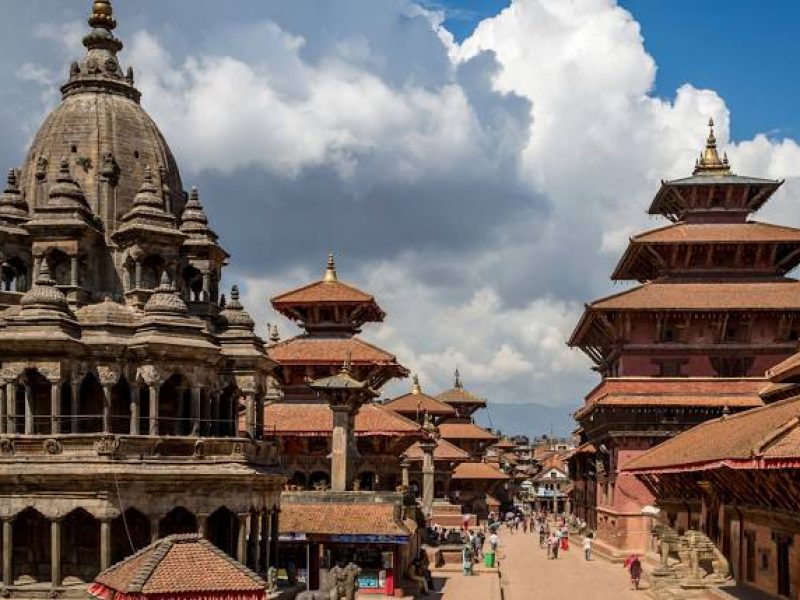
Religious art and artifacts fill the Patan Museum. In Patan, there are many artisans who do traditional arts and the city has lots of cultural events like religious parades, dances, music shows and art displays, which make it a great place for people who love art and culture.
Bhaktapur | The City Of Devotees
Bhaktapur is also known as the City of Devotees. It is a historic city in Kathmandu Valley. The old buildings in Bhaktapur like the fancy wooden temples and palaces show how skilled the Newari craftsmen were. The Durbar Square is a UNESCO World Heritage Site.
It features the Nyatapola Temple and the Palace of 55 Windows, which was a royal residence and is now a museum. The Pottery Square showcases traditional pottery techniques.
Bhaktapur has lots of temples and shrines where people go for religious reasons. The city also has exciting festivals and celebrations that make it a memorable place to visit in the Himalayas.
Exploring UNESCO World Heritage Sites Of Nepal
Nepal’s UNESCO World Heritage Sites showcase the country’s rich cultural and historical heritage. Pashupatinath Temple is an important Hindu temple where lots of people come for worship and pilgrimage. Boudhanath Stupa is one of the biggest stupas in the world. It is a very important place for Buddhists to visit. It has a big dome and eyes that represent enlightenment.
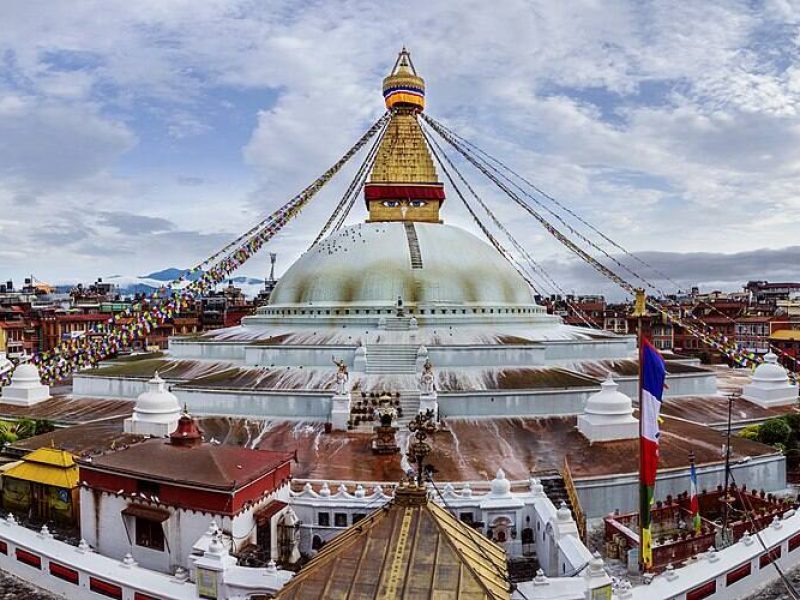
Kathmandu Durbar Square, a UNESCO World Heritage Site, features ancient palaces, temples and statues dating back to the Malla dynasty. Bhaktapur Durbar Square shows Nepal’s old city planning and beautiful buildings including the Nyatapola Temple and 55-Window Palace.
Lumbini is the birthplace of Lord Buddha. It is a sacred pilgrimage site visited by Buddhists worldwide. These places take you on a deep journey through Nepal’s culture, religion and history. They inspire and are respected by everyone, no matter where they come from.
Nepal’s Adventure And Cultural Landscape
Nepal offers a variety of famous sites for adventurers seeking to connect with the rich culture and traditions of the country. The Everest Base Camp Trek is a legendary journey through the Himalayas allowing trekkers to interact with local Sherpa communities and learn about their customs and traditions.
Travelers on the Annapurna Circuit trek experience stunning mountain scenes and various cultural encounters, including staying in teahouses run by local families and visiting ancient Buddhist monasteries and Hindu temples. Chitwan National Park offers wildlife encounters including jungle safaris and bird-watching excursions.
Pokhara is located in the Annapurna range which offers activities like bungee jumping, Phewa Lake and delicious Nepali cuisine. These sites provide a unique opportunity to experience Nepal’s diverse landscapes, cultures and traditions.
Unlocking The Flavors Of Nepal
Nepal boasts culinary traditions and mouthwatering dishes. One staple is Dal Bhat, a nutritious meal consisting of lentil soup, rice, and various side dishes. Another favorite is momos, steamed dumplings filled with minced meat, vegetables, and spices, popular as street food.
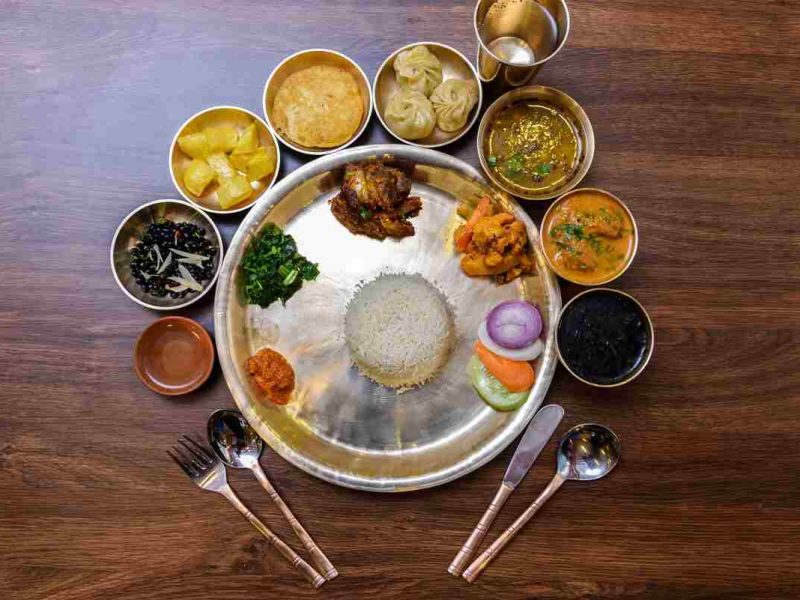
Newari cuisine originating from the Kathmandu Valley is rich and flavorful, featuring dishes like Choila, Bara and Yomari. Thakali cuisine from the Thak Khola region is known for its simple, authentic and homely flavors.
Dishes like Dhido and Gundruk are commonly enjoyed alongside meat and vegetable dishes. Visitors can experience the authentic tastes of Thakali cuisine in restaurants and tea houses along popular trekking routes.
Discover Nepal’s Colors: Festivals, Arts And Crafts
Nepal showcases its colors through its festivals, arts and crafts. Nepal’s colorful festivals like Holi and Diwali are exciting and show its rich culture. Renowned for reflecting the country’s rich traditions, the arts and crafts exude beauty. Thangka painting, woodcarving, pottery, metalwork and textile weaving are among the different forms.
Handmade treasures such as dhaka textiles and paper products are examples of the country’s creativity and craftsmanship. These vibrant colors provide a glimpse into Nepal’s rich cultural landscape making it an ideal destination for travelers.
Journey Of Inner Peace, Yoga And Meditation Retreats In Nepal
Nepal offers a retreat environment for seekers of inner peace. These retreats ranging from the Himalayas to the beautiful lakes of Pokhara provide a sanctuary for self-reflection and personal growth.
Yoga, an ancient practice, is an approach to wellness, combining poses, pranayama and meditation techniques. Experienced instructors guide participants through gentle sessions to all levels.
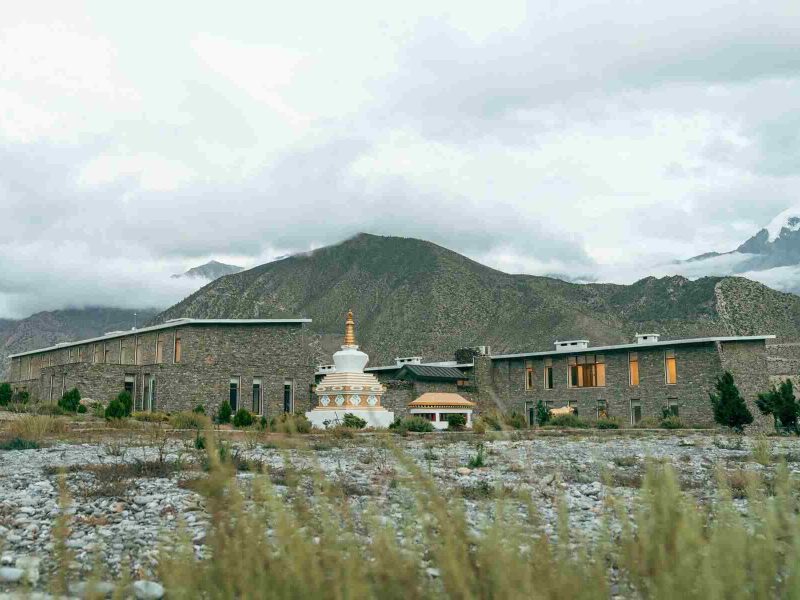
Meditation is an aspect of these retreats, providing tools to quiet the mind, reduce stress and enhance mental health. Nepal’s diverse range of retreat locations from mountain retreats to serenic sanctuaries provide a unique setting for inner peace and renewal. Participants can return home with a renewed sense of clarity, balance and inner peace.
Attraction Of Newari Arts And Crafts In Nepal
Newari arts and crafts originated from the Newar community of Nepal. Their renowned craftsmanship, vibrant colors, and deep-rooted cultural heritage shine through. These crafts include woodcarving, metalwork, pottery, painting and textile weaving.
Wood carvings frequently portray religious motifs and mythological figures, whereas metalwork involves the shaping of copper, brass and bronze into elaborate statues, bells, utensils and sacred objects.
Generations pass down pottery, encompassing both utensils and decorative pieces. Thangka paintings stand out for their vibrant colors.Textile weaving, such as dhaka and paubha is a significant aspect of Newari arts and crafts, showcasing the skill, creativity, and spiritual devotion of the artist.
Conclusion
In conclusion, Nepal offers a rich tapestry of historical treasures and cultural tours beyond trekking. Its ancient cities, UNESCO World Heritage Sites and vibrant festivals showcase its rich history and traditions. Travelers can explore Bhaktapur’s temples, Mount Everest’s beauty and indulge in Nepali cuisine. With deep-rooted spirituality, warm hospitality and natural beauty, Nepal captivates travelers worldwide.
Frequently Asked Questions (FAQs)
1. What are some of the must-visit historical sites in Nepal beyond trekking routes?
Some must-visit historical sites in Nepal include the UNESCO World Heritage Sites of Kathmandu Durbar Square, Patan Durbar Square, Bhaktapur Durbar Square, Swayambhunath Stupa, Boudhanath Stupa and Lumbini, the birthplace of Lord Buddha.
2. How can travelers explore Nepal’s rich cultural heritage through guided tours?
Travelers can explore Nepal’s rich cultural heritage through guided tours offered by experienced local guides or tour operators. These tours may include visits to historical landmarks, cultural sites, traditional villages, museums, and art galleries providing insights into Nepal’s diverse cultural heritage.
3. Are there any specific festivals or events that showcase Nepal’s historical and cultural significance?
Yes, Nepal hosts numerous festivals and events throughout the year that showcase its historical and cultural significance. Some notable festivals include Dashain, Tihar, Holi, Buddha Jayanti and Indra Jatra among others.
4. What are the best ways to incorporate visits to historical sites into a trekking itinerary in Nepal?
Travelers can incorporate visits to historical sites into their trekking itinerary by planning detours or side trips to nearby cultural landmarks. Many trekking routes in Nepal pass through or near significant historical sites allowing trekkers to explore them along the way or during rest days.
5. Can travelers expect to find guided tours or cultural experiences that focus specifically on Nepal’s arts and crafts heritage?
Yes, travelers can find guided tours and cultural experiences that focus specifically on Nepal’s arts and crafts heritage. These tours may include visits to artisan workshops, traditional craft villages and artisanal markets, where travelers can observe skilled craftsmen at work and purchase authentic handmade crafts as souvenirs.

Comment (0)